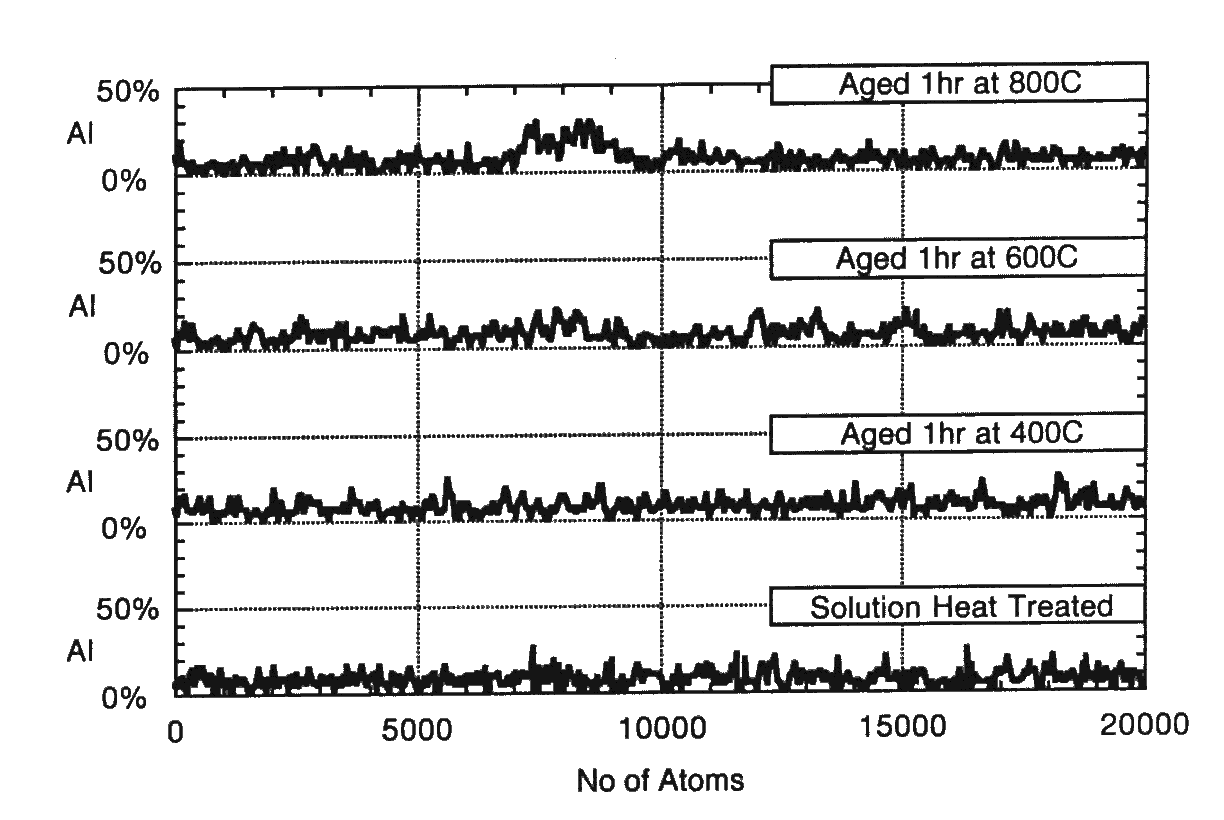Phase Separation in NiTi - Ni2TiAl Alloy System
- ABSTRACT -
P.Warren, H. Murakami,Y.Koizumi and H. Harada
National Research Institute for Metals
1-2-1 Sengen, Tsukuba city, Ibaraki 305, JAPAN
Published in Proceedings of
"Symposium on Atomic Arrangement Design and Control for New Materials"
held at NRIM, November 16,1994, pp.34-35.
1.Introduction.
NiTi(beta2)alloys are commonly known for their shape memory properties,hoeever in this work the NiTi(beta2)-Ni2TiAl(beta-prime)alloy system is being investigated for possible high temperature applications.Conventional high temperature 'superalloys'are generally based upon the FCC gamma-gamma-prime system which has been studied in detail and optimised over many decades. The BCC beta2-beta-prime system has recieved little attention 1,2 but is thought likely to behave in a similar manner. Preliminary delermination of mechanical properties for a range of alloy compositions are presented seperately in these proceedings 3.This paper is reports initial characterisation of some microstructures on the nanometer scale using atom probe microanalysis.
2. Experimental.
The alloy used here is Ni50Ti43Al7.The addition of 7% Al places the alloy within the two phase beta2-beta-prime region but close to the beta-prime solvus making the alloy suitable for an age-hardening precipitation heat treatment.Material was solution treated for 4hrs at 1200 deg.C and subsequently aged for 1hr at temperatures of 400 deg.C,600 deg.C and 800deg.C to investigate the initial stages of beta-prime precipitation.Field ion microscopy and atom probe microanalysis was done using a newly commissioned commercial FIM220 1-D atom probe 4.
3a. Imaging.
Due to the differences in ionization and evaporation behaviour between the different elements in this alloy system,the ordered nickel planes are more easily evaporated than the Al/Ti planes.This complicates site occupancy determination by the analysis of alternatingly ordered crystallographic planes since each plane should be clearly separable.Therefore,for this investigation,imaging was used only for viewing the distribution of second phase precipitate particles and the site occupancy determination requires futher work.
3b. Analysis.
Conventional Atom Probe analysis showed that only material aged for 1hr at 800 deg.C showed clear beta-prime precipitation, as shown in Figure 1.The composition of precipitates in the material aged 1hr at 800 deg.C is given in Table 1.Comparing the averahe precipitate compositions to the compositions of the surrounding matrix it is clear that precipitation has occurred by enrichment of the aluminium at expense of the titanium,which is as expected since they occupy the same sublattice.
1) R.D.Field,R.Darolia,and D.F.Lahrman: Scripta Met.,23,(1989),1469.
2) P.R.Strutt,R.S.Polvani,and J.C.Ingram: Met.Trans.A,7A,January(1976),23.
3) Y.Koizumi,Y.Ro,S.Nakazawa and H.Harada: elsewhere in this publication.
4) A.R.Waugh: Applied Microscopy, Whitwick Business Park, LE67 3JP, UK.

Figure 1.Composition profiles of just the aluminium from each heat treatment. Only material aged 1hr at 800 deg.C shows clear signs of precipitation. However material aged 1hr at 600 deg.C seems to show some signs of decomposition but it is not statistically significant by frequency distribution analysis.
Table 1.
Compositions of matrix and precipitates for material aged 1hr at 800 deg.C. Two different analyses(1 & 2) show slightly different nickel contents but bith show that the precipitates are enriched in aluminium at the expense of titanium.
